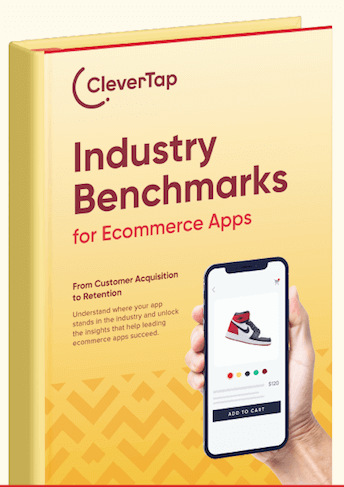The idea of helping customers discover new products and services has been around a long time. Think Netflix recommending other movies or TV shows based on what you’ve watched. Or Amazon’s ubiquitous “customers who bought this also frequently bought that.” Recommendations like this are not only helpful to the shopper, streamer, or user — they can also help the brand or app increase its revenue.
Improving product discovery makes it easier for customers to find relevant and appealing products, and this can significantly help transactional businesses increase their AOV. But how should you do this?
The Point: Increasing Product Discovery
When you use personalization as a key component of your interactions with customers, whether in-app, via your website, or through digital channels, your customers are more likely to respond. They may add multiple items to their cart, purchase higher-priced items, or take advantage of upselling and cross-selling suggestions you’ve made.
In this blog we will look at the different ways that transactional businesses can leverage personalization to increase sales and AOV.
Personalize the Shopping Experience
Personalization is the process of tailoring the shopping experience to individual customers based on their preferences, behavior, and purchase history.
By incorporating personalization, ecommerce and retail businesses can make it easier for customers to find relevant products and ultimately drive higher engagement.
Here are some ways in which you can personalize your marketing and communications with your customers. In most cases, the most effective and efficient way to provide personalized recommendations is by using AI and machine learning algorithms that analyze customers’ browsing and purchase history to suggest relevant items they might be interested in.
Personalized recommendations: If it’s related to something the user bought earlier, recommend it automatically! Personalized product recommendations help customers discover new products without having to search extensively. Bonus points if your system can do deeper predictive analysis to figure out that the user buying wipes and diapers will probably also want to see baby toys, baby strollers, and formula.
Tailored search results: When a user inputs a search term, your ecommerce app should spit out results that match previous purchases and behavior. As Amazon has proven time and again, providing more relevant search results helps customers discover products that match their needs.
Personalized email marketing: Sending email campaigns that promote offers that users may be interested in is an effective way to increase product discovery. What categories of products have they clicked on or purchased before? Once again, your system should be able to connect the dots between purchases to figure out the perfect products to showcase to an email recipient.
Targeted promotions via micro-segmentation: Segmenting customers based on their demographics, preferences, and purchase behavior can help businesses create targeted promotions and content that resonate with each segment, increasing the likelihood of product discovery. Even better, if you are able to micro-segment by customer intent, you can tell you who is most likely to purchase or who is least likely to purchase and use marketing resources only on those most likely to buy.
Dynamic content: Ideally, if your user just bought a new pair of windshield wipers, your system should start recommending related items in real time such as floor mats, car detailing wipes, and other products that appeal to car owners. Displaying dynamic content that adapts in real time to customers’ behavior can help showcase the most relevant products and promotions. They increase the likelihood of more sales.
Customized homepage and landing pages: A user who has bought a lot of musical instruments should be recommended the hottest musician gear on your homepage or specific landing pages. These pages should be personalized to increase product visibility and discovery.
Location-based personalization: Using geolocation data to offer location-specific products, offers, or store information can help customers discover products that are relevant to their specific region. Say you identify a general demographic segment for “users living near Orlando, Florida who are between 50 and 60 years old.” This segment will be the perfect audience for a campaign to sell concert tickets for a new wave nostalgia festival within the city. And it all starts with location.
How CleverTap Lets You Create Personalized Offers
CleverTap makes it easy for you to create tailored offers that are optimized to the user’s tastes and preferences.
Provide personalized recommendations based on a user’s buying patterns and usage trends to increase engagement. Or, upsell and increase order value by promoting new categories of products or services based on the recent transactions of similar customers.
Utilize conditional (“if-then” logic) to create offers. For example, if the customer is new, send them an offer for free shipping on their first purchase. Or if the customer is high value, offer them a reward for their loyalty.
Have their email address? Use it to send personalized, targeted messages such as when an item they viewed is restocked, or a new product has been launched. And with CleverTap, these emails can be automated so you never miss an opportunity to increase engagement and earn additional revenue.
Higher Customer Satisfaction and Sales
By implementing personalization strategies, your ecommerce and retail businesses can create a more engaging and relevant shopping experience for your customers. This tailored approach can help increase product discovery, leading to higher customer satisfaction, improved conversion rates, and ultimately, increased sales. Boom.

Industry Benchmarks for Ecommerce Apps
Subharun Mukherjee 
Heads Cross-Functional Marketing.Expert in SaaS Product Marketing, CX & GTM strategies.
Free Customer Engagement Guides
Join our newsletter for actionable tips and proven strategies to grow your business and engage your customers.















































